I was in need of a Christmas table runner this year, and I had some scraps left over of fabric I loved from a bunting I made last year. I found a tutorial for a table runner that used scraps and a new method that I hadn’t tried called “foundation piecing.” This method basically consists of sewing scraps to a foundation piece, leaving the finished product laying flat and looking really professional. I was proud of myself for learning something new and I really enjoyed the process and how it turned out.
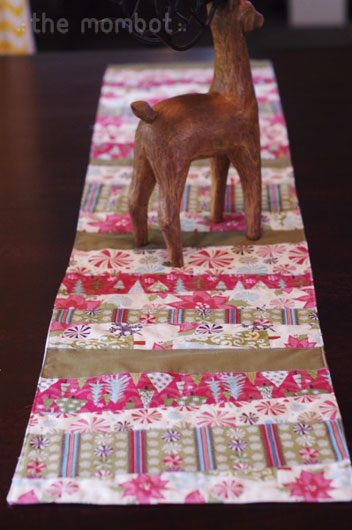
Although I used Christmas fabric, you could use any fabric you want to make a runner for any season or occasion. Here’s a quick tutorial on how to make your own:
What you need: (all amounts based on a runner that is 58” long; mine was closer to 50”, so I used less fabric)
- Cotton muslin for foundation, 3/4 yd
- Solid cotton for the backing, 3/4 yd
- Total of about 1 1/3 yd. cotton fabrics for scraps to piece together
What to do:
1. From your scraps, cut several strips 14” in height and with varied widths. This is the fun part; your scraps are meant to look skewed and not straight, so you can free-hand cut them. This makes for a quick process!
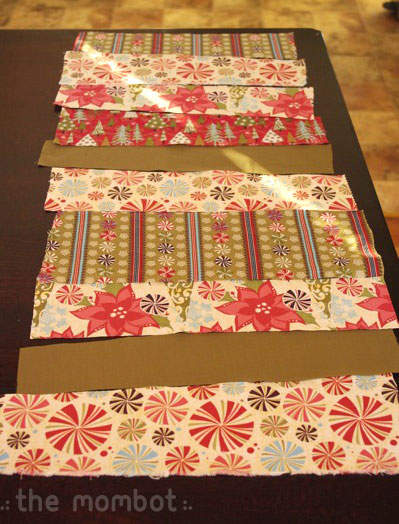
2. From your solid backing fabric, cut the length to your preference, with a width of 13”. If you are using the 3/4 yd of fabric for a 58” runner, you will cut two 13” wide strips and sew them together, then trim to 59”. If you are making a runner of a different length, trim it to 1” longer than your desired length.
3. From your foundation muslin, cut the length to your preference, with a width of 14”. If you are using the 3/4 yd of fabric for a 58” runner, you will cut two 14” wide strips and sew them together, then trim to 60”. If you are making a runner of a different length, trim it to 2” longer than your desired length.
4. Lay your foundation piece out on a long surface. Start arranging your fabric scraps on top of the foundation fabric, alternating widths and colors/patterns. Overlap each piece about 1/2” to allow for seam allowance. Once you have your pieces in an order you like, remove them from the foundation piece, but keep them in sewing order.
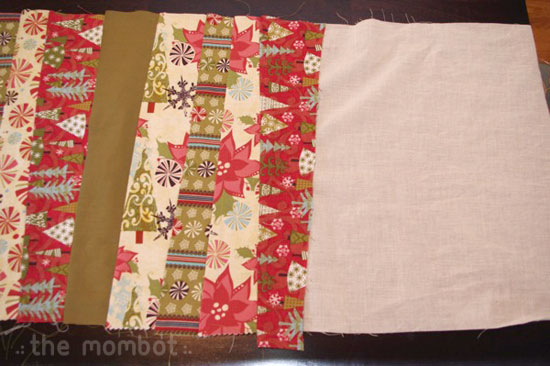
5. Here’s where you start the “foundation-piecing method” that I was so excited about. You will start by laying your first scrap right side up on top of the foundation piece (which is also laying right side up), matching up the left edges. Sew a 1/4” seam down the left edge so the scrap is sewed to the foundation. Grab your next scrap piece and lay it on top of the first scrap with right sides together, matching up the right side edges. Sew a 1/4” seam down the right side edges, sewing both scraps to the foundation piece. Open the second scrap to the right so that it is now right side up, and press. Repeat this process until you’ve sewn all your scraps to one another and the foundation piece. The most frustrating part of this process is having to iron after each seam is sewn, but it creates a really nice, flat look.
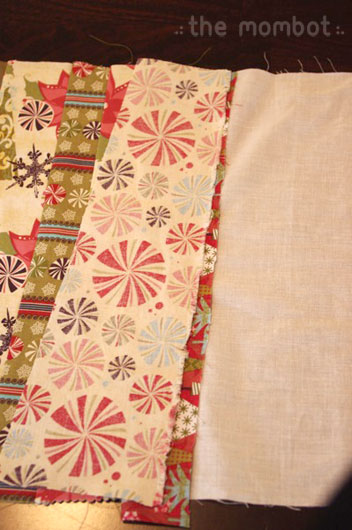
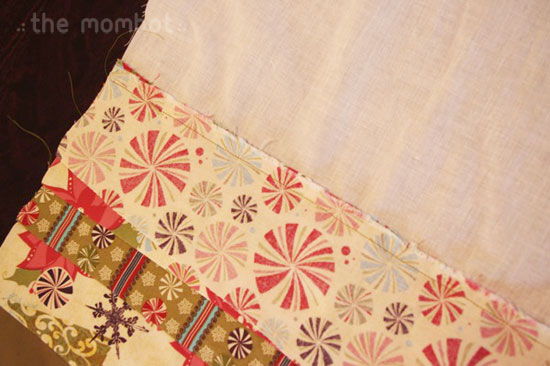
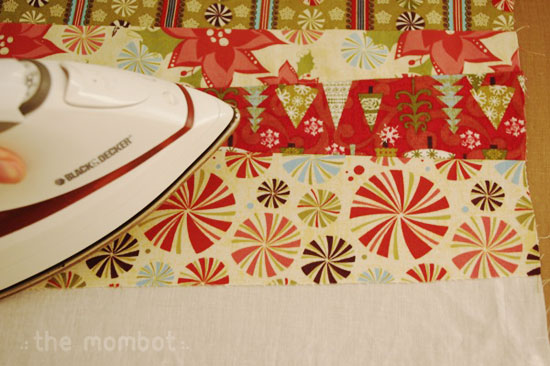
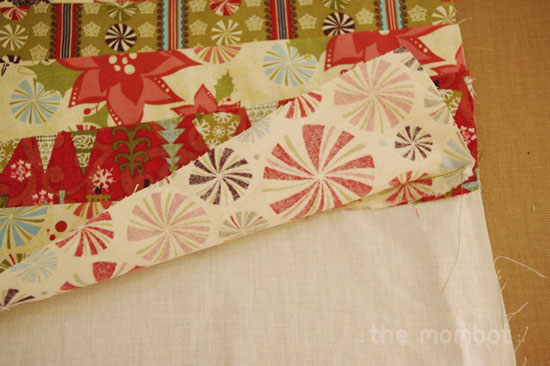
6. Now turn the foundation piece over and square it up to be 13” by 59” (or an inch longer than whatever length you’ve chosen). Machine-baste all 4 edges of foundation piece using a 1/8” seam so your scraps stay in place.
7. With right sides together and edges aligned, stitch backing to foundation piece with a 1/2” seam allowance, leaving about a 7” opening to allow for turning. Trim corners and turn right side out. Press flat and slipstitch the opening closed.
8. For a finished look, stitch around all outer edges with a 1/8” seam. Then, machine-quilt, stitching-in-the-ditch along each seam line between the scraps, through all layers.
There it is! Now that I’m looking back over, it doesn’t look so simple with so many instructions! Hopefully it will all make sense to you, and you’ll be as happy with the outcome as I was.


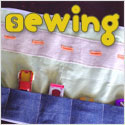

Pingback: Free Quilt Tutorial: Christmas Fabric Scrap Table Runner()